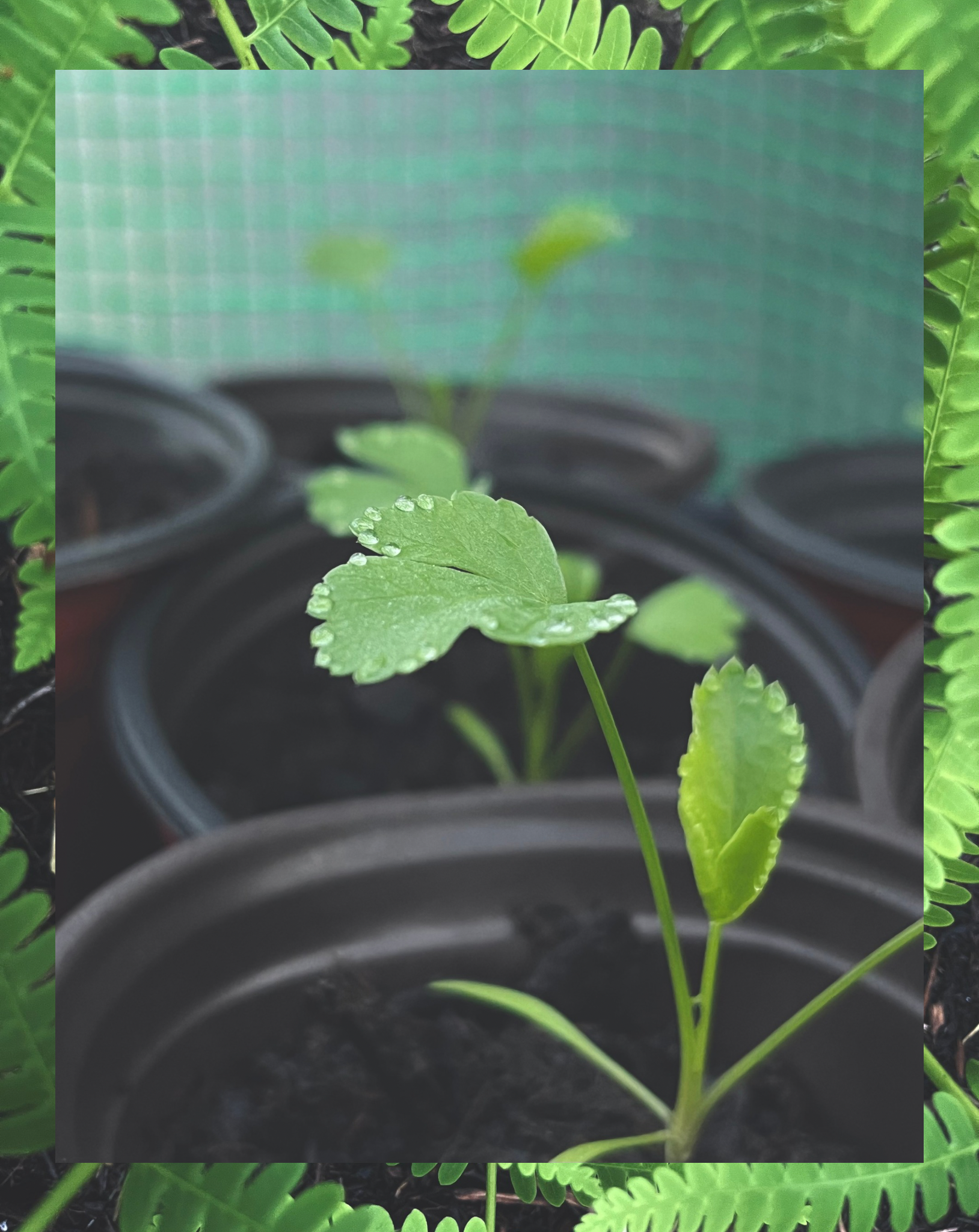Let’s meet our gardens! 5 need-to-know conditions for thriving plants
Every gardener says to wait a year before planting in a new space. But no gardener ever actually does this. The gardening bug always bites too hard. If we DID wait the full year and studied the space like we’re supposed to, we’d learn these 5 very important things about our gardens.
USDA Hardiness Zone (applicable only to our US readers). We’re Zone 6a. Find yours here: https://planthardiness.ars.usda.gov/. When you’re plant shopping, check the plant label for the hardiness zone. If I’m in zone 6a, and the plant I'm looking at is hardy to zone 8, it means the plant won't be able to handle the temperate range in my zone. For instance, most varieties of Salvia won’t tolerate zone 6a. If I want to grow them, I will grow them as annuals (with the expectation that they’ll die over winter), or bring them inside in the cold months. This only applies to perennials.
Soil Type. I have pretty clayey soil. I often find chunks of pure clay, heavy rain fall will pool on the ground, and in the summer, portions of my garden will bake, and often crack. Other parts of my garden have no clay, I could consider these parts loamy, but I hypothesize it’s lacking the signature nutrient richness of loam because the neighboring trees slurp it all up.
The main types are: clay, sandy, silt, loam, peat, and chalky. The most common to find in the garden are clay, sandy, and loam. Read here for more: https://www.rhs.org.uk/soil-composts-mulches/soil-types. Knowing your soil type also helps in plant selection. For instance, if you plan to put a Mediterranean herb like sage or rosemary in clay soil, expect it not to last long. The roots of most Mediterranean herbs are not happy when they’re are sitting in wet. They need well draining soil, and clay soil holds water.
Soil pH. Do you remember your middle school science classes? The pH scale? It’s time to finally apply that knowledge. The pH range goes from 0-14. 0-6 is considered acidic, 7 is considered neutral, and 6-14 is considered alkaline. Again, this helps in plant selection. For instance Rhododendrons needs acidic soil (4.5-6), as do blueberries. I have literally no idea what my pH is. However, I’ve been growing blueberries in pots. They weren’t happy in pots, so i moved them to the ground. I fully understand the risk I’m taking. If they live, I’ll know my soil pH better. Don’t be like me, get a pH test: https://www.sonkir-mall.com/product-page/sonkir-soil-tester. If you want to play risky like i do, and wait forever for results, you can always buy a blue hydrangea. Monitor the plant over the next couple of years, if the flowers stay blue or purple you have more acidic soil, if the flowers turns red, you have more alkaline soil.
Sun map. What direction is your garden facing? South and west facing gardens will get strong sun, north and east facing gardens will get weaker sun or little sun. If you’re in the southern hemisphere, I imagine some of this will be reversed. Do you have tall trees that block sun from parts of the garden? I do, my whole southern face is shaded by trees, so while my garden is south facing, I can’t take full advantage of it. Plant labels will tell you how much sun a plant needs. Full sun is at least 6 hours of direct sunlight, part sun/part shade means 4-6 hours of direct sun, and less that 4 hours is shade. However, it can get even more nuanced than that. For instance, there are quite a few plants that love full sun but do better with cover from afternoon sun, which can be very strong.
Nutrient levels. Soil can be nutrient rich or nutrient poor, or somewhere in between. Much of this depends on soil type. Sandy soil, for instance, is typically nutrient poor. However, there are other factors to consider. When I moved into my house three years ago, I suspected that the previous owners were dousing the yard with tons of chemical pesticides and herbicides. I knew that it would take a few years for the soil to heal. It would be a slow return to soil/plant synergy for any sort of nutrients to start emerging. With each year, the more worms, weeds, and birds I see, the more I know we’re reaching a good balance. Nutrient levels are coming back to where they should be. Because my soil is fairly clay-y, I know there’s a potential for a lot of nutrients. I can help tap into those nutrients by mulching every year. This creates aeration, which helps the clay release the nutrients. If your soil is sandier, mulching will also help, but it takes time. In the meantime, match soil type with plant type. There are some plants that can thrive in nutrient poor conditions. Often, wild flowers and prairie plants thrive on low nutrient soil, yarrow and some milkweeks, for instance. You’d think that adding nutrients/fertilizer to your soil will help, but what it actually does is prevent the soil from doing its job and soil and plant will not learn to communicate.
All of this boils down to the classic “right plant, right place” methodology. Once you know your growing conditions, you can find the right plants to fit in. This helps you avoid having to constantly amend the soil, extensive watering, and repeated disappointments when plants don’t work out. But keep in mind it’s all an experiment. A plant you didn’t think would work somewhere might just surprise you. Go forth with this knowledge but stay open to all the surprises the natural world has to offer.
Happy gardening!



